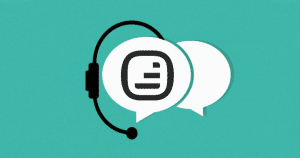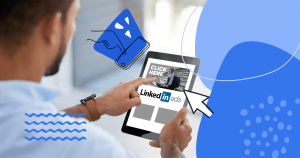In today’s visually-driven world, understanding how to hire a graphic designer is crucial for any brand looking to make a lasting impression. The right designer can transform your ideas into visually compelling designs that resonate with your audience. But with so many options available, where do you start?
Options like drag-and-drop design tools and foolproof interfaces have made it possible for nearly anyone to try basic graphic design. But a truly effective design is about more than simply having the logistics down pat.
It takes experience, know-how, and a trained eye for visuals to produce professional-level designs that efficiently support brands and convey powerful messages. That makes hiring a professional graphic designer a must when it truly counts.
But how much does it cost to hire a graphic designer, and how can you be sure you’re hiring someone whose work you’ll be happy with? Let’s break down what you need to know about finding the right person and hiring someone perfect for your brand.
What Is Graphic Design: Unraveling the Artistic Mystery
The term “graphic design” refers to the process of combining various visual and textual elements to convey pointed messages and ideas. Great designers understand the ins and outs of key artistic elements like balance, contrast, proportion, and emphasis. They also understand how to use what they know to create specific impressions and spark interest.
Print and traditional graphic design are declining these days but are still relevant. However, digital graphic design is increasingly important as brands and consumers alike take to the web to pursue the things they need. Today’s best graphic designers leverage a combination of traditional and digital skills to create various assets, such as:
- Compelling web design
- Dynamic designs for product packaging
- Illustration
- Typographic design
- Layouts for magazines, brochures, posters, etc.
- Marketing and advertising designs
- Animations and other types of moving graphics
The Power of Design: Why It Matters More Than You Think
Although a well-orchestrated graphic design is easy on the eyes, quality is about a lot more than simple aesthetics. Graphic design elements like logos, color schemes, font choices, and more all contribute to your brand’s overall visual identity.
Plus, consumers often make shopping decisions with their eyes first, so your brand’s approach to graphic design can help set you apart from the competition in a powerful way, boosting your bottom line in the process. Here are some other key reasons why graphic design matters.
Amazing first impressions
Modern consumers have a lot vying for their time and attention these days, so making an unforgettable first impression is crucial. Sophisticated, unique graphic design elements can help ensure your target audience remembers you via a powerful first impression.
Clear messaging
A picture is worth a thousand words, especially in a day and age when the average person is exposed to between 4,000 and 10,000 ads every day. Well-executed graphic elements like infographics and charts help summarize important information at a glance, making it several times more engaging than simple text alone.
Consistent branding
Graphic design and winning written content truly do go hand in hand when it comes to results. Strong visual elements help reinforce important ideas and add value to content, helping your brand establish industry authority. Developing a distinctive approach to graphic design helps boost brand recognition, as well.
Effective storytelling
Graphic design elements like font styles and color palettes are important parts of your brand identity, as well as helpful when it comes to storytelling. Choices like these convey emotion, reinforce brand values, and support the storytelling present in all your best content.
Creative edge
At this point, there’s no such thing as an entirely new idea. Everything’s been done before, so you need to differentiate your content by leveraging your unique creativity and point of view. Amazing graphics are a simple but effective way to give yourself a creative edge in an increasingly competitive marketing landscape.
Design 101: The Basic Rules Every Graphic Designer Swears By
The smooth, effective graphic design involves plenty of creativity. However, there are certain inviolable rules that every great design adheres to, whether you’re talking about standout packaging for a new product or an interactive weekly company newsletter design. Here’s a look at a few of the most important.
Be consistent
When designing brand-related visuals, consistency is vital when it comes to colors, typography, layout, etc. Ideally, people should be able to recognize your brand presence just by these elements alone.
Embrace alignment
Although placing graphic elements within a design in unusual, off-kilter ways may sound like a creative way to differentiate your visuals, this can easily backfire. Branded and professional designs work better and are easier to process visually when they’re properly aligned, organized, and neat.
Pay attention to the visual hierarchy
Establishing a proper visual hierarchy within your designs helps guide the viewer’s eye in an organized manner, making it easier for them to understand your visuals at a glance. Use color and size wisely to help emphasize some elements over others.
White space is your friend
Sometimes less is more when it comes to graphic design, especially when designing for brands and businesses. Using white space wisely and taking care to leave enough of it helps designs look more professional, as well as gives the visual elements you use more impact.
Keep images crisp
Raster-based images rely on pixels, so they depend on resolution to look their best. Enlarging or shrinking them can result in unsightly pixelation that ruins an otherwise great design. Always go for high-resolution images to avoid this, and be sure to maintain proportions when scaling up or down.
Watch your textual elements
Don’t focus on the visual elements of your design so intently that you lose sight of the text. Spelling, punctuation, and grammar errors can tank a design and potentially lose the respect of onlookers, so don’t sleep on proofreading.
Keep it legible
Resist the urge to go crazy with too many elaborate fonts when putting together a good design. It won’t ultimately matter how visually stunning a design is if people have to struggle to read the text, so always err on the side of simplicity.
Finding the Perfect Graphic Design: How and Where to Search
Knowing what differentiates a fantastic graphic design from the rest of the pack is step one of taking your brand assets and marketing content to the next level. The next step is finding the right people to add to your team.
Here are some expert tips on how to hire a graphic designer who’ll change the game for your brand.
Decide between in-house vs. freelance
While larger enterprise companies that require constant access to professional designers may want to consider hiring a full-time graphic designer or two, that’s not your only option these days.
Many top designers choose to work on a freelance basis instead, with good reason. Going with freelancers over full-time employees allows you to order and pay for designs as needed – a great option for small businesses, start-ups, and sole proprietors.
Know what you need
The world of graphic design is vast and varied, so think long and hard about what you need your designer to be able to do.
Are you merely looking for someone to create standard still graphics, or does the person need to be familiar with motion graphics and animation, as well? Will the person you choose need to help build your brand identity from the ground up, or will they simply be added to one that already exists?
Craft job descriptions and casting calls with enough detail that potential applicants will fully understand what’s expected of them. Include a short list of requirements and “nice to have” extras. But avoid making too many demands, as you might scare away some of your best applicants.
Understanding what skills you’re looking for
Although work experience and areas of expertise may vary from designer to designer, some skills should be considered essential in 2024 and beyond. For example, every professional designer should be proficient in essential programs like Photoshop, Illustrator, and InDesign.
However, soft skills are important, as well. For instance, does the applicant work well as part of a team? Can they think outside the box, handle constructive criticism, and communicate well? Look for evidence of traits that will make someone a better-than-average addition to your team.
Look carefully at each applicant’s portfolio, as well. It’s not enough for the person to do great work, in general. Look for (or request) examples that are similar to the types of projects you’ll be asking the person to take on for you.
Offer fair compensation
How much is it to hire a graphic designer? Taking on the right person shouldn’t necessarily destroy your budget, but it’s important to keep in mind that talent, in-demand skills, and experience call for competitive rates.
So, be prepared to offer fair compensation in exchange for someone’s time and labor. Treat your designers well, and they’ll continue giving you their very best for a long time to come in return.
Last but not least, it’s important to know where to look for the best graphic designers. Top platforms tend to attract top talent, so choose yours carefully. LinkedIn is a great place to post job listings, as numerous top professionals populate there and keep track of the job boards.
Also, look closely at dedicated platforms like Upwork or WriterAccess. Upwork is a good place to look if you want access to lots of different talents. However, WriterAccess uses a rigorous vetting process to pre-screen talent for you, so you can rest easy in the knowledge that everyone on the platform is experienced, skilled, and highly professional.
Spotlight on WriterAccess: Your Go-To for Graphic Design Talent
Don’t let the name “WriterAccess” fool you into thinking you can only use this trusted premium platform to connect with writers. Yes, WriterAccess is a terrific place to meet copywriters, bloggers, and professional writers of all kinds. However, it’s also a great place to meet, vet, and hire other content creation experts, like graphic designers and editors.
Benefits WriterAccess, in particular, brings to the table include the following:
- A thorough vetting process that ensures only top talent makes it onto the platform
- Handy star-rating system that lets you browse, hire, and pay designers according to their skill level and experience
- Highly accurate matching system that makes finding and connecting with the right talent simple
- User-friendly interface that takes the guesswork out of drafting, posting, managing, and paying for projects.
Plus, WriterAccess offers new members a free two-week trial period that allows them to try the platform out risk-free.
Sealing the Deal: Tips for Working Successfully with Your Graphic Designer
Once you’ve found the perfect graphic designer for you, it’s essential to ensure a smooth, successful working process for both of you. Here are some tips for doing exactly that.
Create efficient design briefs
The ability to create a workable project brief is crucial when it comes to getting what you want out of your talent. Strike a good balance between detailed and concise to ensure your designer has what they need to do a good job without becoming overwhelmed.
Use visuals for direction
It can be tough to accurately convey what you want when ordering professional graphic design visuals, as you can never be sure someone’s imagining the same thing you are. Providing visual references that are similar to what you’re looking for can be super helpful here.
Implement a reasonable schedule
Next-level graphic designs take time, so it’s important to ensure designers have enough of it to deliver their very best for you. Be reasonable when it comes to putting together delivery timeframes and project milestones. Be sure to be available and responsive to questions or concerns your designer may have, as well, to ensure projects stay on schedule.
Ready to meet the graphic designer of your dreams? Sign up for your free 14-day WriterAccess trial today to connect with some of the best and brightest professionals in the industry. You’ll be glad you did.



![[ROCK NA] [EBOOK SEO] Complete Guide](https://rockcontent.com/wp-content/uploads/2024/06/banner_Search-Engine-Optimization.png)






